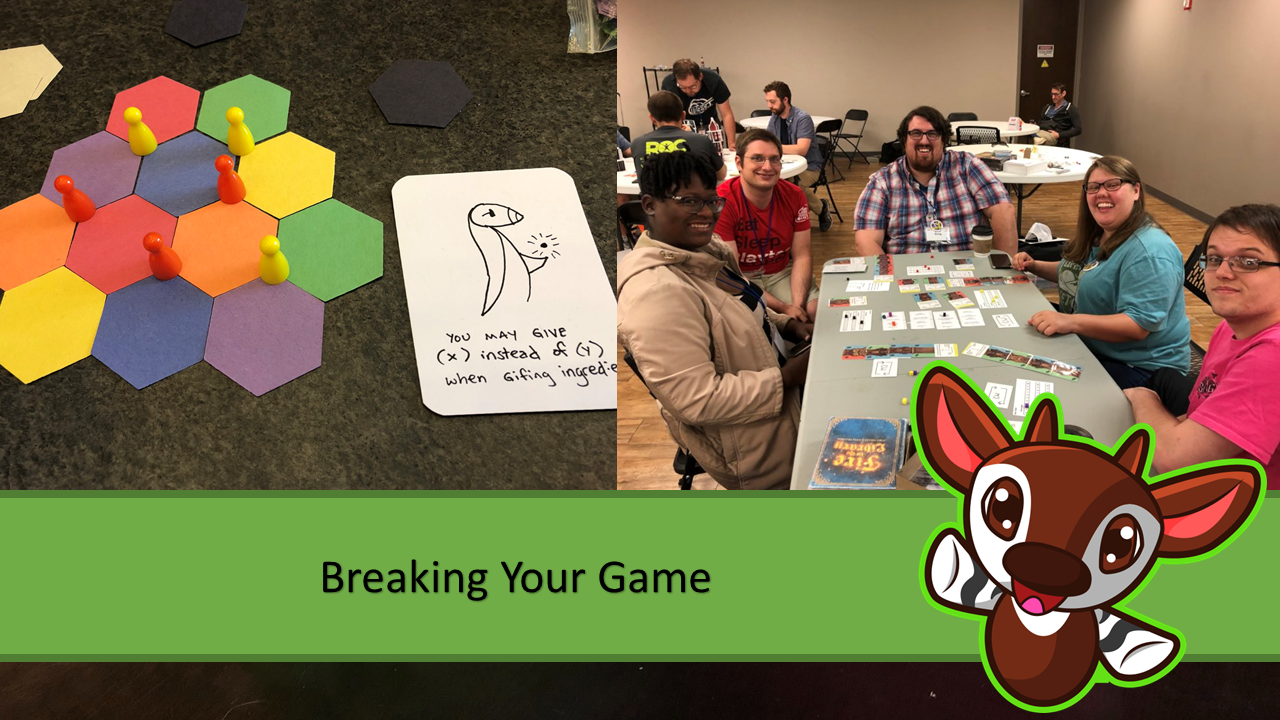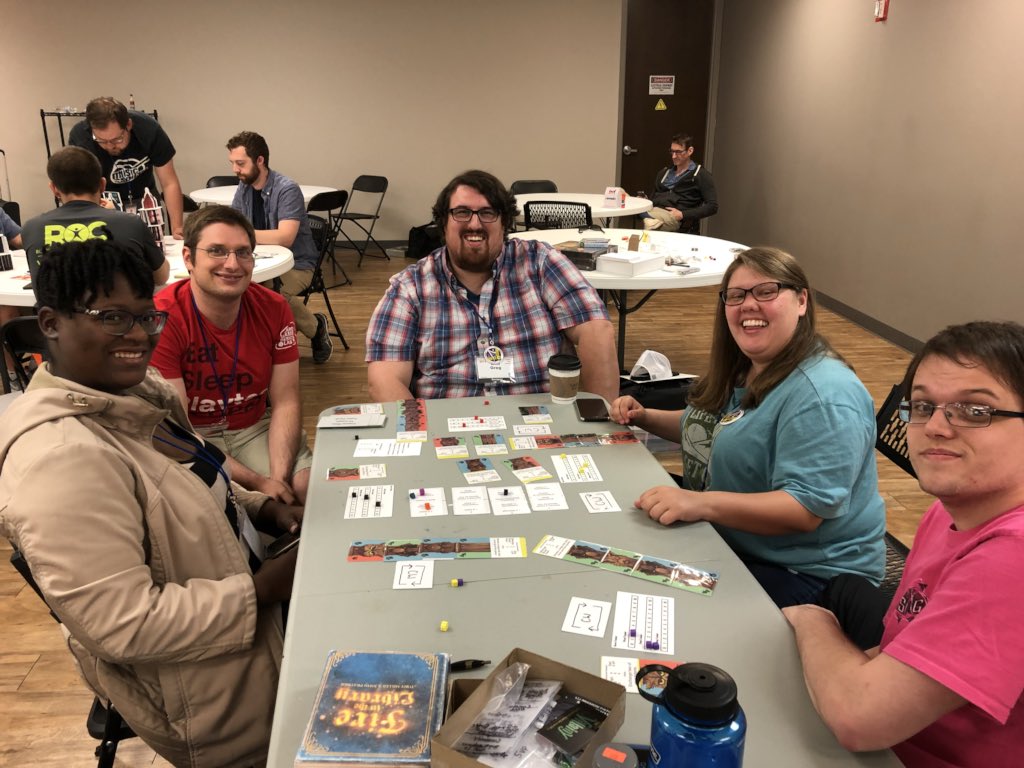
Playtesting is the most important part of game design. Making the prototype is vital, sure, but so much depends on how you playtest. Being deliberate and getting the right playtesters can turn a good game into a great one.
I’ve talked about playtesting in a variety of interviews, and I recently wrote an entire post about Playtesting Goals. Having playtesting goals in mind means that you organize the right playtesters and pay attention to the correct things when you playtest.
In that blog, I talked about a variety of goals for your playtests:
- Determining if the game is fun
- Figuring out if the game is thematic enough
- Varying player counts for balance and fun
- Ensuring different strategies are viable
- Checking game balance
- Making sure the game has the right end condition(s)
- Verifying the game fits its audience
Despite all of these goals, one subject I didn’t strictly talk about is breaking your game or identifying when your game breaks down. It can happen during a few of these types of tests, but I wanted to dive deeper here.
Focusing on breaking your game shouldn’t happen until you have a pretty solid and fun game. It can be disheartening to have your game break, even in the best of conditions, so you’ll want to be confident enough in it that you’ll be able to keep working on it.
Now, when you’re trying to break your game, you’ll want to have experienced playtesters who will tell you the truth and be able to deal with the game if it reaches a weird or miserable place. This usually means getting game designers to playtest your game and telling them ahead of time that you want to see if they can break it. You don’t want your playtesters to have an unexpectedly bad experience that makes them never want to playtest again (or at least, never playtest for you again), so make sure your playtesters are prepared for the game to potentially break. Prototyping conventions are a great place to find experienced playtesters who understand the importance of trying to break the game and who will know what to expect.

Breaking your game is about testing all of the edge-case scenarios and seeing if anything can cause someone to get into a non-reversible situation or allow a player to win in an unexpected way. You never want the best way to win the game to be a way that isn’t fun or for the game to drag on for an unexpected period of time. Keep in mind that you’re not going to be as focused on fun or regular play, and that’s fine! Remember: the game should already be fun, and the basic gameplay should function fairly well if you’re doing this kind of testing.
When you’re trying to break your game, you should think about the following things:
- Is there a way to rush the end game?
- Is there a way to cause the game to NEVER end? (Or to make the game go on for a really long time?)
- Is there a way to get stuck without anything to do (such as running out of resources and being unable to get more)?
- Is there a way to get into an endless loop?
- Does the game get weird at any particular player counts? Are there any effects that are multiplied by the number of players and can cause issues?
- Is there one strategy that always wins?
- Does the player order greatly affect the odds of winning? For example, does the first player win 75% of the time?
For instance, when I was playtesting Stellar Leap, I had a player that would do seemingly random things. In one session he stranded himself in the middle of nowhere, unable to do anything for the rest of the game. This led me to add a new type of action that would simply give you resources of your choice. Now, if someone doesn’t think out their actions or gets really unlucky (dice can be mean sometimes…), they’re not out of the game! And all it took was a simple action option.
Then there’s Kingdoms of the Deep, a simultaneous action selection game that ends when the reset action is used a specific number of times. Players typically play 3-5 cards, then use the reset action to get all of their actions back, making the game length semi-predictable. But what would happen if a player played the reset action every turn? They’d lose, of course, and the game would be over very quickly! However, if there was a way to win with this strategy, it would ruin the game for everyone else and require a fix.
Keep in mind that an important part of the process is being okay with your game breaking and figuring out what the best options are to fix any issues you find. The solution could be simple or could require a lot of overhaul to your game design, it’s really dependent on the issue(s) and how pervasive it is. After all, if you don’t find the ways your game can break, someone else will when your game releases… when it’s much harder (or impossible) to fix it.
Did you enjoy this entry? Have you had experiences trying to break your own game? Please let me know! I’d love to hear what you think and what kind of things you’d like to see from this blog. Feel free to send me an email or comment with your thoughts!
Don’t forget to sign up for my mailing list, so you don’t miss a post: https://tinyletter.com/carlakopp
A really good article, Carla.
One of my games stalled out right at the finish line recently. One of my playtesters accidentally found a strategy that could keep the game from ending. I bought him a beer afterward. He earned it.